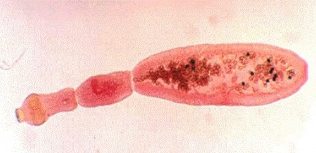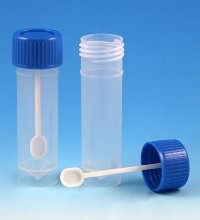Types of worms affecting internal organs are called helminths (worms). According to statistics, to date, helminth infestation affected about 30% of the total population. The toxic worms can affect any part of the body. It is dangerous not only diseases that can cause worms. Their presence in the body can lead to death.

To date, the bot is quite a treat not only medical preparations, but also folk remedies. For each type there are different methods of treatment. Therefore, it is necessary to know and understand what are the different types of worms, symptoms, to take timely measures.
Classification of helminths
Parasitic worms are divided into two major groups: intestinal and tissue.
The first species is found directly in the intestine. This group includes:
- ascarids and pinworms;
- hookworm and Giardia;
- vlasoglavy and dwarf tapeworm;
- beef tapeworm and broad tapeworm;
- pork tapeworm.
Tissue the worms can settle in any organ of the human body to a parasite for many years. These include:
- cysticerci and flukes;
- Trichinella and hepatic Dens;
- Echinococcus and alveolars.
Roundworm
Are the most common and tricky types of worms that live in the small intestine of an adult or a child. Infection by this species of worm is called ascariasis.
Before you get into the small intestine, roundworm make the way throughout the body of the organism. After infection the larvae of species penetrate into the bloodstream, and then with the blood into the lungs, where they Mature.
In the first days of the invasion, people began to feel malaise, nervousness, fever, shortness of breath, cough and pain in the chest. These symptoms justify the fact that initially the worms strike the respiratory system.
Infection can occur by drinking raw water from sources that are poorly processed fresh fruits and vegetables. In summer, the risk of injury increases.
Pinworms
Small worms, which settle in the intestine, causing a disease called enterobiasis. Worms lay eggs in the anal passage. Laid eggs turn into larvae and can re-enter the body only through the mouth.
Re-infection occurs due to contact of dirty hands with the food that he eats. Symptoms of infection can be itching around the anus and irritability.
Important! The carrier of the disease is the person.
hookworm
Infection occurs through broken skin in contact with the earth, inhabited by the larvae of these species of worms. These parasites before we get into the intestines done the same way as roundworm.
The symptoms can be cough, abdominal pain, nausea and violation of the chair. This type of helminths may cause anemia.

Giardia
Giardiasis is progressing in people with the habit of nail biting and other items (pencils, pens). Infection can also occur in the case of drinking contaminated water, unwashed foods, through contact with dirty Laundry that might contain larvae, and a carrier of the disease.
The symptoms can be diarrhea and abdominal pain.
Vlasoglavy
trichocephalosis occurs during infection with larvae of the whipworm. They get inside along with raw fruits and vegetables. Dirty hands and water also are carriers.
Invasion is accompanied by acute abdominal pain, diarrhea, loss of appetite. Often the signs of infection are similar to symptoms of appendicitis.
Beef tapeworm
One of the most dangerous types of worms, parasites in the colon. Adult worm up to several meters in length. Individual takes away from the human body all the nutrients and produces a strong intoxication.
Symptoms of infestation are:
- diarrhea and pain in the abdomen;
- vomiting and nausea;
- restless sleep;
- dizziness and fainting.
The risk of getting beef tapeworm infection occurs by eating insufficiently cooked beef infected with bovine tapeworm larvae.
A tapeworm
The cause of difillobotrioz is eating poorly processed fish products and caviar. The worm that causes disease is one of the largest and can reach ten meters. Symptoms of infection are severe abdominal pain and anemia.
Pork tapeworm
Infection with this helminth species is extremely dangerous to humans. Eating pork meat that has not passed sufficient heat treatment, can cause the ingestion Finn that become fully grown.
From the body of the pork tapeworm periodically separate the so-called segments, which are able to independently leave the body through the anus or with the feces getting into the environment. Taeniasis similar to the symptoms of infection bovine tapeworm.
Hepatic Dens
Opisthorchiasis is caused by the ingestion of larvae human liver Fluke along with the infected fish.
Signs of the presence of opisthorchiasis:
- nausea;
- diarrhea;
- aches throughout the body;
- the occurrence of Allergy.
More serious symptoms are chronic. This type of parasite threat to the development of liver cancer.

Echinococcus
The worm settles in the body, most commonly the liver or lungs. Echinococcus can cause the formation of cysts in the affected organ and the appearance of tumors. The infection can be fatal. The larvae are transmitted to humans through contact with sick animals.
Trichinella
They are exposed in the first place, people who eat poorly processed meat of wild animals. A carrier of Trichinella can also be pigs. The habitat of adults in the human body are different kinds of muscles, (respiratory, face, etc.).
At the early stage nausea and diarrhea. Subsequent symptoms invasion are temperature, swelling, skin rashes, muscle pain. Infection by this type of parasites without timely treatment, can cause death.
The symptoms of the various types of worms
Mostly when infected with helminths there is a loss of the digestive tract and the disruption of their work. Some types of worms have hooks that cling to the intestinal wall, tearing it and produce in open sores the products of its life and special substances that negatively affect the digestive system and provoking the emergence of the people have such negative symptoms, such as nausea, culminating in vomiting, diarrhea or constipation, bloating and flatulence. May appear, and neurological symptoms, sleep disturbance, and irritability due to poisoning by toxic waste products of all types of worms. The severity of these symptoms depends on the duration of infestation of the person. For each varieties of worms has its own characteristic clinical picture. To be able to avoid mistakes when determining the type of hit patient's parasites, should be more to consider, what are the signs cause common disease:
- For most roundworms are characterized by the presence of pain, does not have an exact localization, nausea and retching, disorders of the chair. This kind of worms like pinworms, striking most often in children, provokes the appearance of severe itching in the anus. From the description of this class of parasites you can see that for the clinical picture caused by them, and is characterized by the occurrence in humans, common symptoms of expressed toxicosis and allergies;
- Infection of humans provokes flat worms have the appearance of dysuric disorders. For acute forms of a pathology characterized by an increase in size of the liver and spleen, and in the case of migration of this species helminth infection in the chronic stage, patients appear bright symptoms of colitis;
- The presence in the human body worms flukes characterized by diseases of the liver, pancreatitis and hepatitis. They also provoke the appearance of symptoms associated with severe neurological disorders.
What types of worms are in children?
The most common in a child with worms, without special tools visible in the stool are roundworms and pinworms. These parasites affect children most often. Knowing the causes symptoms and pictures what their Mature individuals in the stool, can promptly to suspect their presence and to prevent the emergence of irreversible disorders in the human body.
In Calais, the children can meet not only single representatives of these types of worms, but also tangles of parasitic worms. Their larvae may migrate with blood flow, damaging the walls of the lungs, bronchi and vessels in the case of penetration into the pancreas and the liver, they can cause pancreatitis or hepatitis. For accurate diagnosis of children and adults, one must examine the stool, which should be identified the presence of parasite eggs. But it is quite difficult because the process of reproduction in these species of worms doesn't happen every day.

Types and treatment of helminths
Universal methods of destruction of the parasites to date, does not exist. Approach to the treatment of worms in humans is always strictly individual. Possible therapy, medication drugs, surgery or the use of traditional methods. Final tactics of therapy prescribed by a doctor after a thorough diagnosis and identification of species of parasitic worms. All therapeutic measures for the destruction of worms, for both children and adults should be administered only by a specialist. Self-medication in this case is absolutely contraindicated. Therapy of helminthiasis should be carried out gradually and comprehensively. It consists of the following steps:
- Preparatory phase;
- The destruction of parasites;
- Restoration of their functions.
At the initial stage of use of the sorbents, aiding in the binding and excretion of toxins from various species of worms, and vegetable oil. Next, you need to start taking drugs that destroy parasites. Last patients are assigned to enzyme products intended for cleansing the digestive tract. They help to remove toxins, stop caused by certain types of worms, the destruction of liver cells and accelerate the restoration of its structure.
In that case, if the presence of parasites detected in the child, therapy courses getting rid of them is necessary for all family members. This will help prevent the formation of a nidus of infection with any kind of worms through continuous infecting each other their eggs. Also in this situation it is necessary to strengthen the implementation of sanitary procedures and personal hygiene. Only if all rules in a short time to get rid of parasites and to prevent further spread of the infection.
Diagnostics of helminthiasis
Tests for helminths
Diagnosis of helminth infections is complicated and is solely based on a holistic examination of the person for whom applied various laboratory techniques. All survey methods used to identify helminths, are divided into three groups:
- Morphological diagnosis (examination under a microscope pieces of tissue obtained during biopsy or puncture of various organs);
- Clinical, immunological and serological methods of diagnosis (ultrasound of various organs, tomography, x-ray, blood tests, urine, RSK, ELISA, etc.);
- Parasitological methods (are the most informative and useful for the diagnosis of helminths, since they allow to detect eggs, larvae, or the worms in the different biological fluids such as feces, urine, blood, gastric juice, bile, vomit, swabs, intestinal mucus, etc.).
Morphological diagnosis is rare, only when there is a suspicion of helminthiasis, in which the parasites can be in the thickness of the tissue, for example, cysticercosis, trichinosis, etc. Clinical, immunological and serological methods are also used for the detection of helminths localized in the thickness of the internal organs (e.g., lungs, liver, brain, etc.). In all other cases, to diagnose helminths use a variety of techniques allow you to immediately establish a kind of worm, which caused the disease.

When the primary mass surveys for the detection of helminth infections have always used Parasitological techniques and only after that, when you suspect infection by parasites, which are located deep in the internal organs, additionally produce morphological diagnostic or use clinical, immunological and serological methods. So if you suspect a bot you should first to make a study in a specialized laboratory.
For the prevention of helminthiasis should strictly follow the rules of personal hygiene: always wash hands before eating, after using the toilet or contact with animals, not to eat unwashed fruits and vegetables, half raw meat or fish products. Avoid drinking water from open reservoirs. Destroy flies and other insects carrying the eggs of the worms.

































